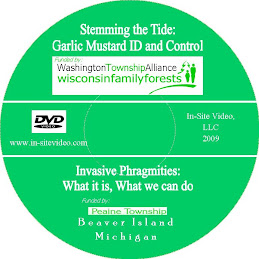Hi Cindy and All:
A great project - very glad to see you following this idea to a fruition. Also, thanks for the chance to make my first ever blog post.
You have some good content here on ID and control. My one suggestion is I think it will be important to point out that when evaluating a particular infestation someone needs to make a distinction between an early stage infestation for which there is reasonable chance of eradication through control, and a mature and growing infestation that is unlikely to be eradicated despite all the resources you throw at it. In those cases it will save lots of frustration to set a goal of containing the infestation and limiting the spread to new areas. To do this you'll need to teach folks about scouting and treating satellite populations, and keeping people out of infested areas. We've got some materials on this I could share if its helpful.
Thanks and best of luck
Fred Clark
Tuesday, April 1, 2008
Predicting The Perfect Predator To Control Invasive Species
Predicting The Perfect Predator To Control Invasive Species is an article which appeared on The Science Daily website. I wrote to Dr. Adam Davis, Ecologist,
USDA-ARS Invasive Weed Management Unit to ask if he would like to comment on the outline.
Dr. Davis graciously replied with these comments:
USDA-ARS Invasive Weed Management Unit to ask if he would like to comment on the outline.
Dr. Davis graciously replied with these comments:
- Longevity of the viable seeds in the ground is ten years rather than five.
- Seedlings in Central Illinois germinate in the spring before anything else
- I question the sustainability of large-scale pulling operations.The soil disturbance created by all the pulling may do more damage than the garlic mustard itself
- There is a control agent in quarantine that has been shown to be completely specific to garlic mustard. It is not able to complete its life cycle on any other species
Posted by
Cindy Gaskill, Washington Township Alliance, Wisconsin Family Forests, Inc.
at
10:34 AM
1 comment:

Subscribe to:
Comments (Atom)
